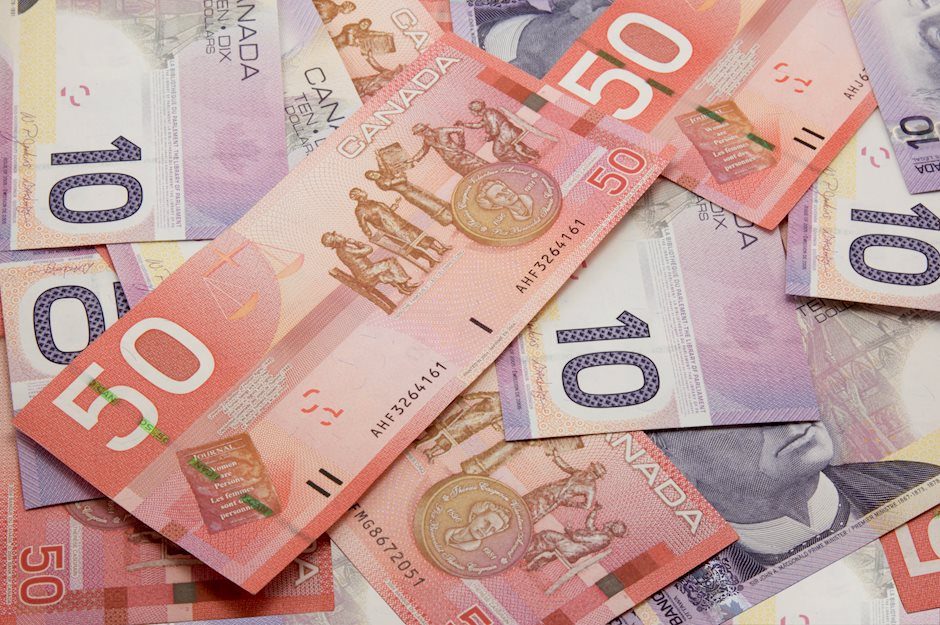USD/CAD trades around 1.3900 after pulling back from over two-year highs, awaits Fed decision
- USD/CAD may appreciate as the US Dollar (USD) receives support from Trump trades.
- US Treasury yields correct downward after surging to 4.31% and 4.47%, respectively, on Wednesday, their highest levels since July.
- The commodity-linked CAD receives support from the improved crude Oil prices.

USD/CAD retreats from an over two-year high of 1.3958, reached in the previous session. The pair trades around 1.3900 during the Asian hours on Thursday. However, this downside of the USD/CAD pair could be limited as the US Dollar (USD) may receive support from Trump trades following the victory of Republicans in the US election.
However, the US Dollar Index (DXY), which measures the value of the US Dollar against its six major peers, pulls back from a four-month high of 105.44, recorded on Wednesday. The DXY trades around 105.00 amid a downward correction in US Treasury yields. US yields surged to their highest levels since July to 4.31% and 4.47%, respectively, on Wednesday.
US Federal Reserve’s (Fed) policy decision will be eyed on Thursday, with markets expecting a modest 25 basis point rate cut in the November meeting. The CME FedWatch Tool shows a 98.1% probability of a quarter-point rate cut by the Fed in November.
The commodity-linked Canadian Dollar (CAD) might have received support from the improved Oil prices as Canada is the largest Oil exporter to the United States (USD). West Texas Intermediate (WTI) Oil price appreciates toward $72.00 at the time of writing.
A summary of the Bank of Canada’s (BoC) discussions showed concerns among some officials that a large rate cut could raise fears of a deeper economic downturn. However, BoC officials emphasized that markets should not expect half-point cuts at every meeting, as future decisions will be driven by incoming economic data.
(This story was corrected on November 7 at 13:41 GMT to say that USD/CAD retreats from an over two-year high, not an all-time high.)
Canadian Dollar FAQs
The key factors driving the Canadian Dollar (CAD) are the level of interest rates set by the Bank of Canada (BoC), the price of Oil, Canada’s largest export, the health of its economy, inflation and the Trade Balance, which is the difference between the value of Canada’s exports versus its imports. Other factors include market sentiment – whether investors are taking on more risky assets (risk-on) or seeking safe-havens (risk-off) – with risk-on being CAD-positive. As its largest trading partner, the health of the US economy is also a key factor influencing the Canadian Dollar.
The Bank of Canada (BoC) has a significant influence on the Canadian Dollar by setting the level of interest rates that banks can lend to one another. This influences the level of interest rates for everyone. The main goal of the BoC is to maintain inflation at 1-3% by adjusting interest rates up or down. Relatively higher interest rates tend to be positive for the CAD. The Bank of Canada can also use quantitative easing and tightening to influence credit conditions, with the former CAD-negative and the latter CAD-positive.
The price of Oil is a key factor impacting the value of the Canadian Dollar. Petroleum is Canada’s biggest export, so Oil price tends to have an immediate impact on the CAD value. Generally, if Oil price rises CAD also goes up, as aggregate demand for the currency increases. The opposite is the case if the price of Oil falls. Higher Oil prices also tend to result in a greater likelihood of a positive Trade Balance, which is also supportive of the CAD.
While inflation had always traditionally been thought of as a negative factor for a currency since it lowers the value of money, the opposite has actually been the case in modern times with the relaxation of cross-border capital controls. Higher inflation tends to lead central banks to put up interest rates which attracts more capital inflows from global investors seeking a lucrative place to keep their money. This increases demand for the local currency, which in Canada’s case is the Canadian Dollar.
Macroeconomic data releases gauge the health of the economy and can have an impact on the Canadian Dollar. Indicators such as GDP, Manufacturing and Services PMIs, employment, and consumer sentiment surveys can all influence the direction of the CAD. A strong economy is good for the Canadian Dollar. Not only does it attract more foreign investment but it may encourage the Bank of Canada to put up interest rates, leading to a stronger currency. If economic data is weak, however, the CAD is likely to fall.
Author

Akhtar Faruqui
FXStreet
Akhtar Faruqui is a Forex Analyst based in New Delhi, India. With a keen eye for market trends and a passion for dissecting complex financial dynamics, he is dedicated to delivering accurate and insightful Forex news and analysis.

















